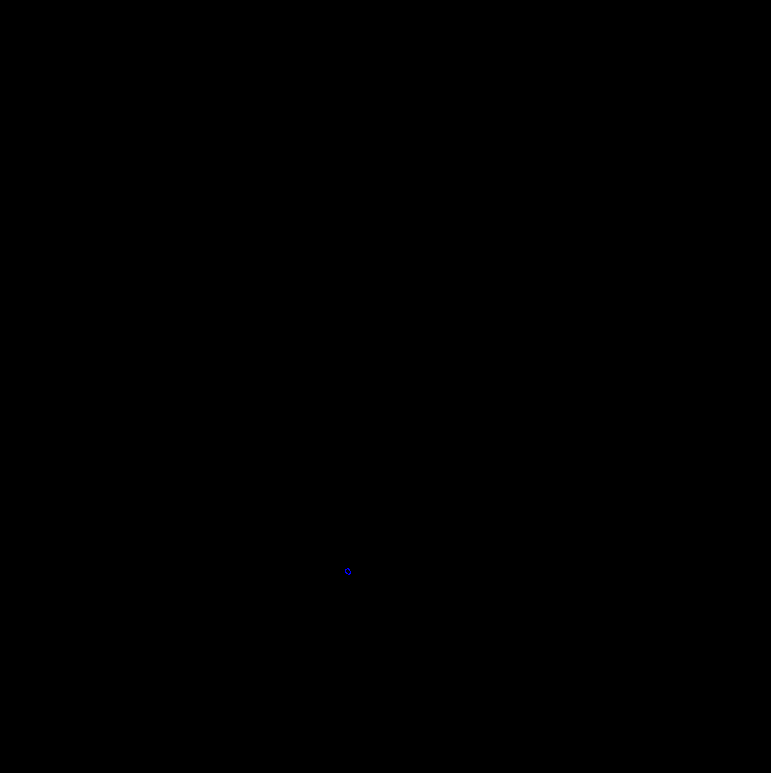Try dilation, a technique used to enlargen light spots over darker spots in an image.
Start by dilating the image such that many of the enlargened white blobs will overlap and form a complete connected contour, as such:

Now, when OpenCV finds contours from this large figure to make convex hulls, it will find a complete circle rather than loose seperate blobs.

From here, you can find the largest contour, which is the (outer) largest light-purple contour.
Here is the code for this (which currently computes the contours, but not the largest area - this is just to demonstrate the dilation):
#include "opencv2/highgui/highgui.hpp"
#include "opencv2/imgproc/imgproc.hpp"
#include <iostream>
#include <stdio.h>
#include <stdlib.h>
using namespace cv;
using namespace std;
int main( int argc, char** argv )
{
Mat src; Mat src_gray;
src = imread( "convex.jpg", 1 );
//resize(src, src, Size(640,480), 0, 0, INTER_CUBIC);
cvtColor( src, src_gray, CV_BGR2GRAY );
namedWindow( "Source", CV_WINDOW_AUTOSIZE );
//Dilate
int erosion_size =10;
Mat element = getStructuringElement(cv::MORPH_ELLIPSE,
cv::Size(2 * erosion_size + 1, 2 * erosion_size + 1),
cv::Point(erosion_size, erosion_size) );
dilate(src_gray,src_gray,element);
imshow( "Source", src_gray );
// Convex Hull implementation
Mat src_copy = src_gray.clone();
Mat threshold_output;
vector<vector<Point> > contours;
vector<Vec4i> hierarchy;
// Find contours
threshold( src_gray, threshold_output, 200, 255, THRESH_BINARY );
findContours( threshold_output, contours, hierarchy, CV_RETR_TREE, CV_CHAIN_APPROX_SIMPLE, Point(0, 0) );
// Find the convex hull object for each contour
vector<vector<Point> >hull( contours.size() );
for( int i = 0; i < contours.size(); i++ )
{ convexHull( Mat(contours[i]), hull[i], false ); }
// Draw contours + hull results
RNG rng;
Mat drawing = Mat::zeros( threshold_output.size(), CV_8UC3 );
for( int i = 0; i< contours.size(); i++ )
{
Scalar color = Scalar( rng.uniform(0, 255), rng.uniform(0,255), rng.uniform(0,255) );
//drawContours( drawing, contours, i, color, 1, 8, vector<Vec4i>(), 0, Point() );
drawContours( drawing, hull, i, color, 1, 8, vector<Vec4i>(), 0, Point() );
}
// Show in a window
namedWindow( "Hull demo", CV_WINDOW_AUTOSIZE );
imshow( "Hull demo", drawing );
waitKey(0);
return(0);
}





